Anita Luo, Apocalypse, 2023, Audio
Proposal
John Cage suggested that “Everything we do is music.” Even in silence, one can find music—its presence lies in the sounds that decorate time. I intend to approach this project by exploring how sound can evoke certain human emotions and by experimenting with different ways of producing sounds to broaden the horizons of timbres received by the human ear to create an interesting and emotive piece of art.
Brainstorming
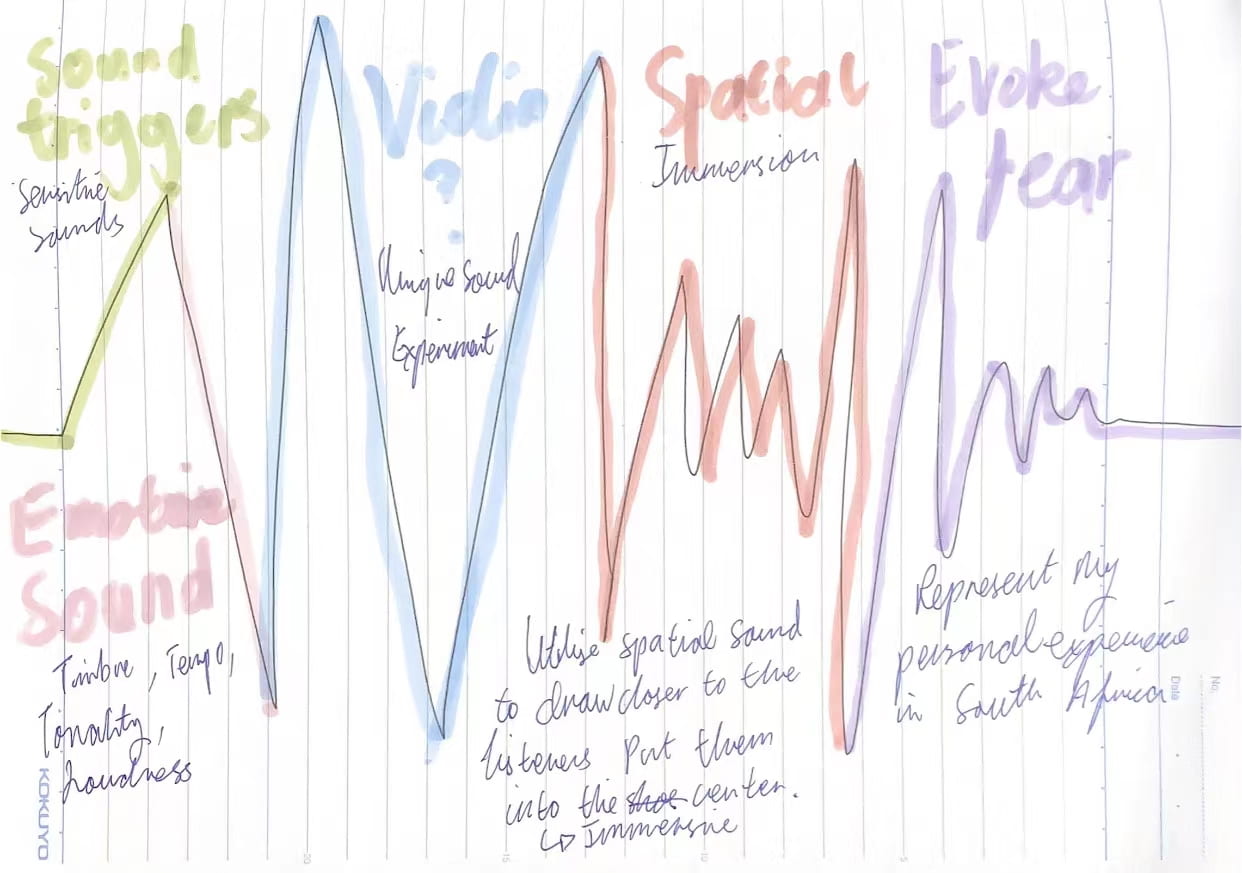
Inspiration & Conceptual Integration
I was heavily inspired by the examples given in class. For example:
- John Cages’ experimental music 4’33” informed me that anything, even silence, could be music. In other words, even in silence humans can find sound—vibrations—that give a moment in time life and meaning. In silence, John could feel the pulsing of his blood and the whistling of his nerves. Similarly, I’d like to create a soundscape that allows my audience to have their own unique conceptual and sound space to feel a sense of immersion and particularity.
- Symphonie pour un homme seul by Pierre Schaeffer and Pierre Henry is an exceptional example of how one could combine human and non-human sounds to create a unique and eerie composition. I believe that this mixture of elements creates “dissonance” that is abstract to our human ears. It amplifies and duplicates the sounds to a level that is unfamiliar to us which creates an ominous but also vitalic piece of art. I would like to try this method in this project to evoke the emotions of fear and uneasiness.
Process
Step 1: Pick your memory
Decide on a memory that you want to pick as the subject for your Memory Soundscape project. When choosing, consider the memory’s potential to be turned into sound. Write 200 words that describe your memory and post them to your blog.
As the sun dipped below the horizon and darkness shrouded the world, my bedroom altered into a foreign space. Gloomy shadows danced on the walls, and the sounds of creaking in the corners reverberated. The familiar sounds of the house became eerie and unfamiliar. My heart started to race. I couldn’t shake off the feeling that something was watching me from the murky surroundings. The wind howled outside—I did not close my window. Vulnerable. I pulled the blanket up to my chin, seeking comfort and protection from the soft cotton. I was alone in my room—only my fear kept me company. My fear transitioned to a ring in my ears; it was scratching my ears like a violin. As I tiptoed out of my bedroom and ventured into the dark hallway, the house seemed to hold its breath. Every creak of the floorboards and flicker of light played tricks on my mind. Still light-headed from standing, I was carrying a bell that was my head. As my anxiety consumed me I felt a detachment from reality—as if I was falling into an abyss.
Step 2: Collect Sound Samples
With a Tascam audio recorder, I recorded sounds such as door creaks, wall cracks, wind, and ambiance (freezer buzz) that were the foundation of mapping out my memory. (Certain sounds were recorded with my classmates, Shahd and Cathy, such as the door creak and bells during class to save time outside of class for this project.)
Using the Tascam audio recorder was accessible and I had no obstacles in using it. I found that any errors during the recording process such as inconsistent dynamics or background noise could be easily resolved during the editing process in Adobe Audition with sound editing tools such as “DeNoise” and volume adjustor.
I recorded sounds that had different durations which ranged from 5 to 30 seconds.
Step 3: 1-Minute Sound Mix
Before editing my final project, it is important to grasp the technical skills to share with the audience what I intend to convey. I utilized tools such as transitions, fades, panning (spatial effect), and copy/pasting.
Through this exercise, I also found patterns, such as the violin near the end, that I could use in my final project. I also like the 2 different sections in the soundscape that introduced the concept of time and the themes of change, or heightening tension.
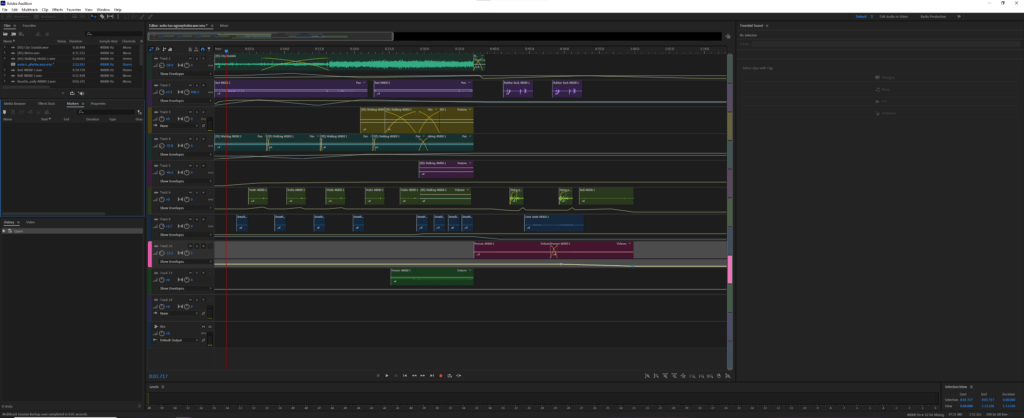
Step 3: Adjective Demonstration
To convey different abstract ideas, I learned how to use an array of sound effects including delay, reverb, noise reduction, and filters. One of the difficulties from this exercise was trying to find sounds that could create a cohesive composition. I found that using similar effects such as reverb throughout the soundscape could achieve this.
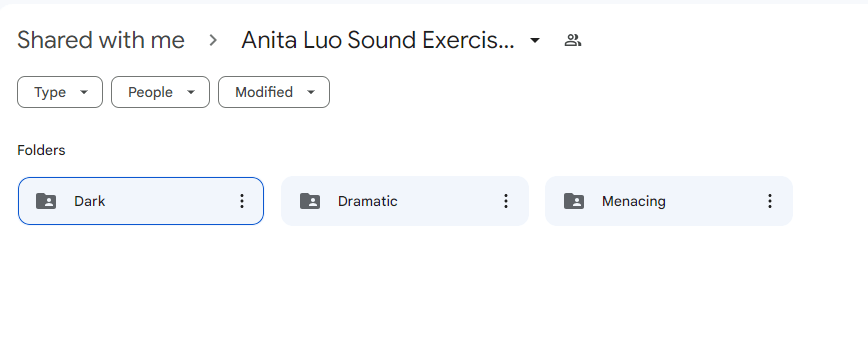
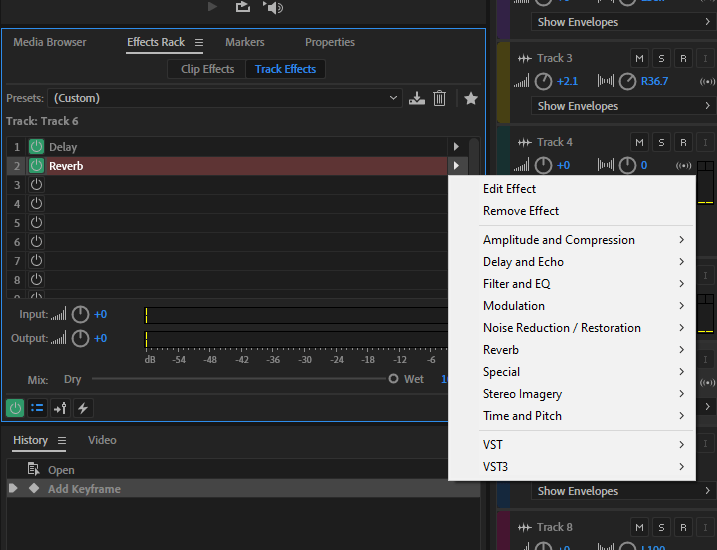
Step 4: Final Composition
Due to my experimentation in Steps 2 and 3, I had a general direction of where my final project was headed. Following along with my written memory I incorporated all the elements while editing the audio. I utilized the functions of “Clip Effects” and “Track Effects” in this step and discovered the many advantages of using them concurrently which include creating contrast and variety in the soundscape.
Additionally, I made a few adjustments after the presentation in class. Firstly, the soundscape ends abruptly due to the sudden cut in the heavy breathing at the end. Secondly, there was more rustling of the bed than I would have liked. Lastly, I did feel like the ambiance and vibrations at the end were strong enough so I also increased the volume.
Image of Audition
Initial:
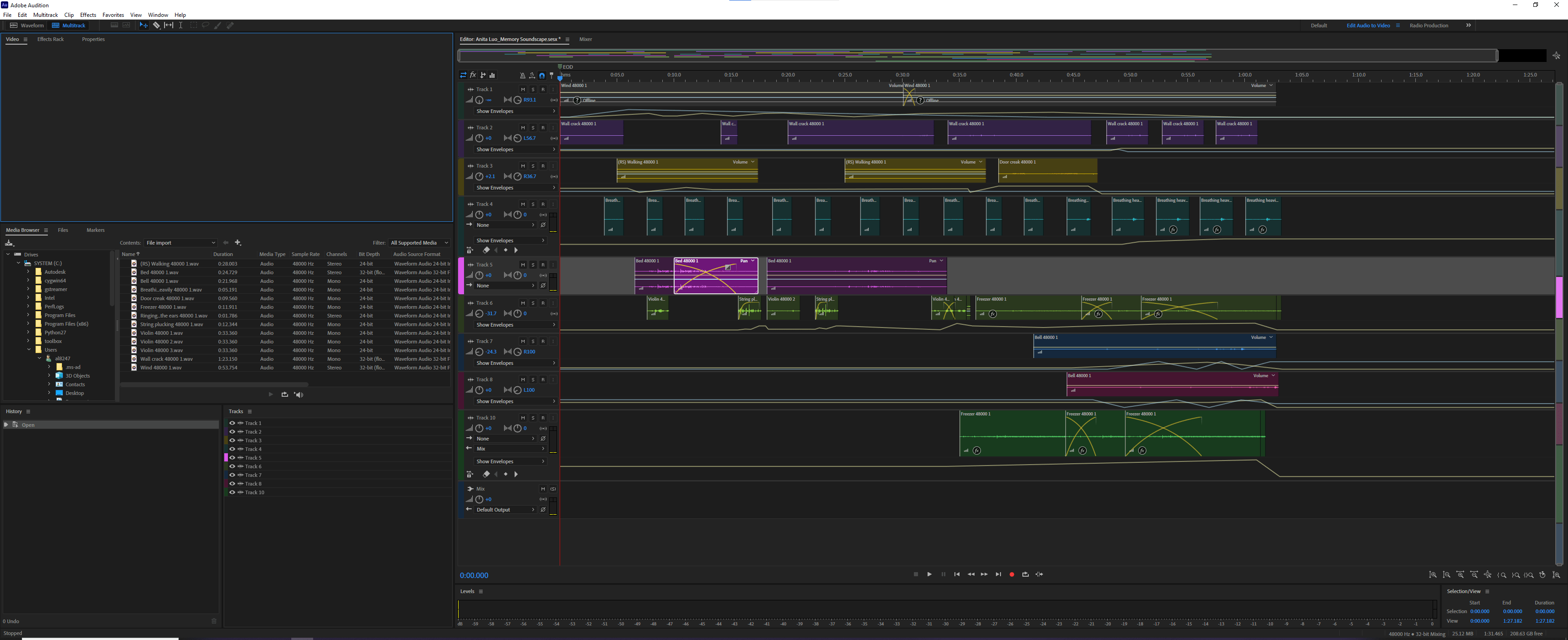
Adjustment:
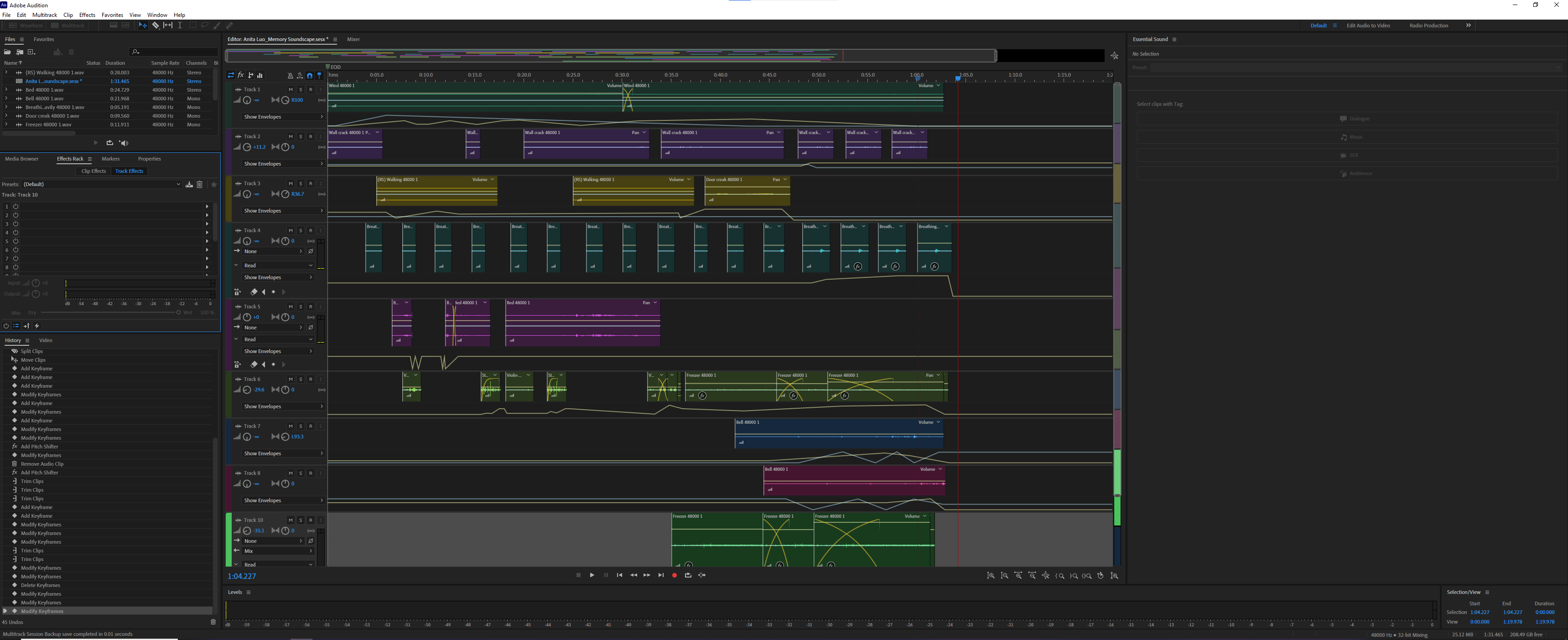
Timeline
- Shadows dancing, wall crack, bed
- Violin – instinctual sounds, fear scratching in my ear
- Ringing in the ear – anxiety
- Anxiety causes muscle tension and changes in blood flow that can impact the structures within the ear
- Bells represent my headache – after standing
- Apocalyptic universe – surrealistic (childhood) in which you feel a sense of detachment
Adaptation Mapping
Initially, I wanted to end my memory on a more hopeful note in which the bells symbolized warmth and heaven. However, it was difficult for me to change the mood of the soundscape in less than one minute without having to cause any abrupt change—which could affect the audience reception negatively.
Initial ending: In an attempt to reach the end of the hallway, I imagined warm lights and bells—images and sounds that brought me comfort. As I approached the light and bells, I discovered the power of courage and the comfort of hope that broadened my surroundings and I knew that I could overcome any fear that came my way.
Thus, I utilized the bell to create a dizzy environment to convey the idea that the first person is disorientated. I like this plan more because it allowed me to delve deeper into how an artist could intensify a certain emotion or idea. In the end, I added a lot of reverb, delay, and underwater filters to create vibrations.
Audience Reception
At first, I was afraid that my composition was too simple and “clean”. However, my classmates such as Denny complimented me on the simplicity of my soundscape. The simplicity created room for better interpretation, consumption, and immersion for the audience. There was less emphasis on a storyline and more emphasis on emotions—which is probably one of the most important facets of an artwork.
A few classmates also pointed out that my composition followed the criteria of the assignment perfectly as my soundscape had an element of ambiguity or abstractness which was appealing and intriguing.
Rationale
One of my favorite forms of art is one in which the audience becomes a part of it. I believe that Memory Soundscape was a great opportunity for me to execute this form of art with a unique medium like sound. What makes sounds a work of art? Laozi states: “The reality of the building does not consist in the four walls and the roof but in the space within to be lived in.” Similarly, the reality of sound doesn’t depend on the vibrations that propagate as a wave but the context, the memories, and the emptiness of the space that it lives in. The one reason why a soundscape of memories is striking is that the space in which the memory is encapsulated has something special to tell.